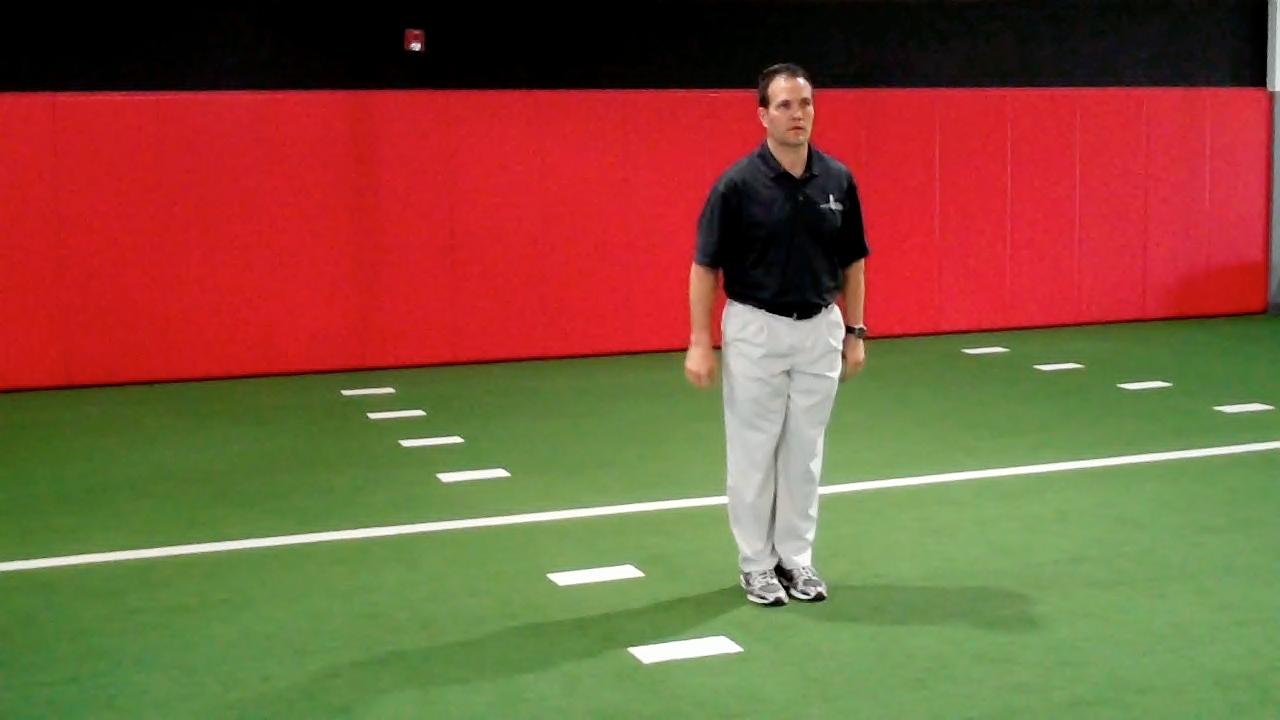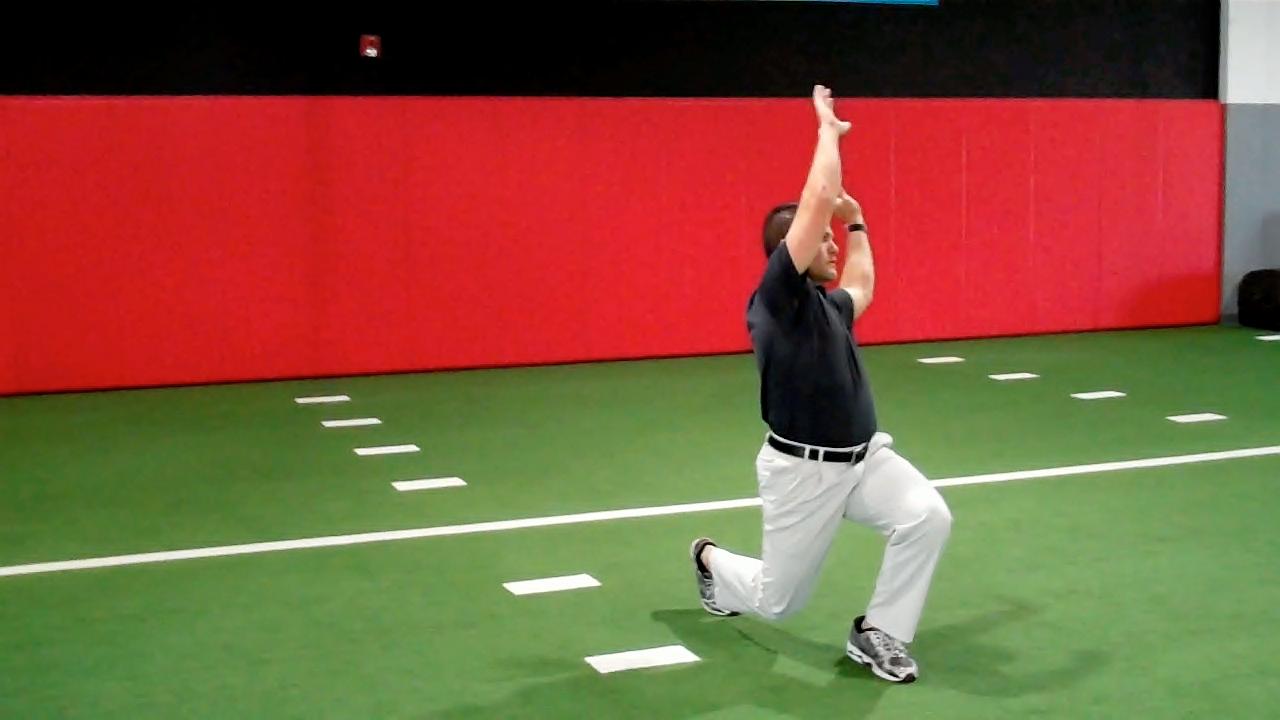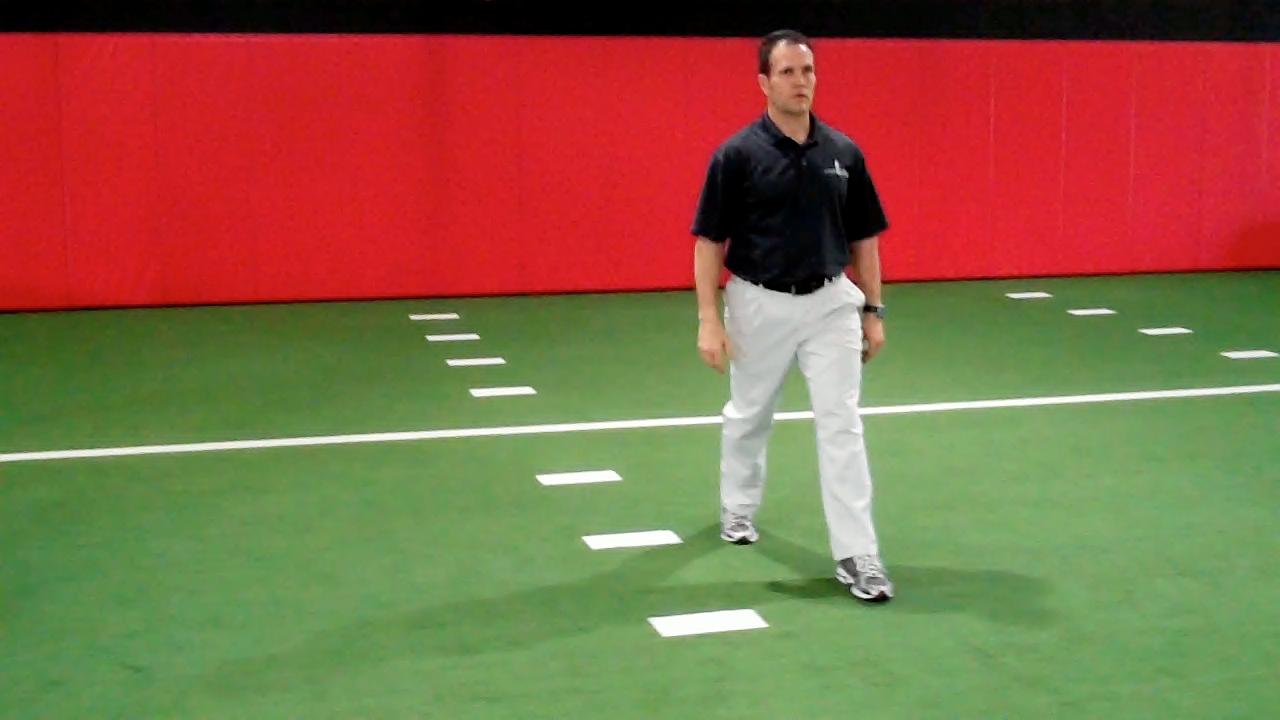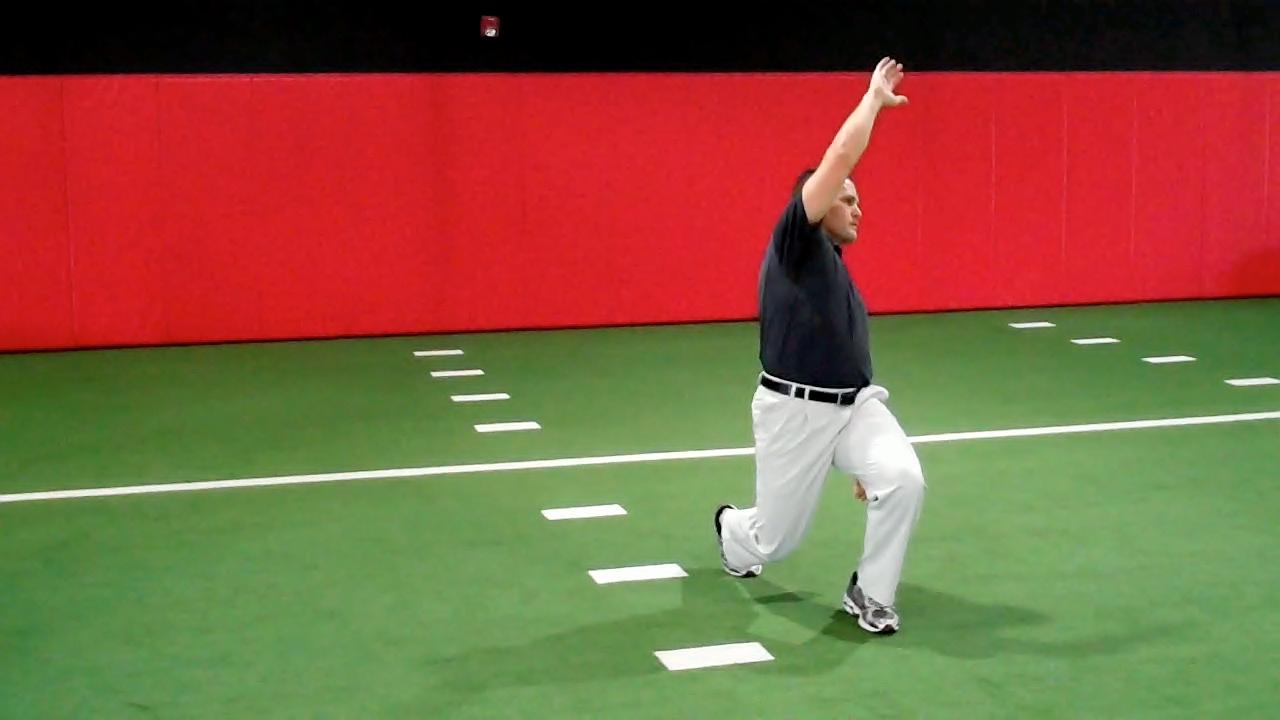![E-News-Column_2[1] E-News-Column_2[1]](https://cms-static.wehaacdn.com/fit--pro-com/images/E-News-Column_2-1-.2523.0.0.jpg)
| Brian demonstrates an exercise designed to improve hip mobility while also increasing strength and stability in the front side leg. See 'Related Resources' below for past Functionally Fits and other exercises and training tips. |
Execution:
Begin standing upright with both feet together. Next, stepforward with the left leg as if performing a lunge. As you descend into thelunge position, simultaneously move both arms diagonally up and back over theleft shoulder until a comfortable stretch is felt in the right anterior hip. Pause one to two seconds at the bottom of the lunge and then return to the start position.
 |  |
Application:
Hip flexor tightness is prevalent today.Tightness in this muscle group often leads to anterior pelvic tilting, whichcan contribute to increased stress at the lower lumbar segments. In addition,tightness coupled with abdominal weakness often leads to undesirable shearforce on the lumbar spine with abdominal work involving the legs as the hipsmove into relative extension (due to reverse muscle action).
This exercise is will improve hip mobility while alsoincreasing strength and stability in the front side leg. Another added benefitis that it will address thoracic spine mobility. I prefer to use this exerciseas part of a mobility circuit or warm-up, but it could be used as astrengthening activity. Whether the rectus femoris and/or iliopsoas is toblame, this movement will help improve extensibility and encourage propertri-planar motion.
Additional Notes:
If clients struggle to maintain adequate stability or properlunge form, consider doing this in a stationary split lunge stance (below) with the diagonalmovement at first. Clients may also find it easier to use a single arm (sameside as the trail leg) initially until they master controlling the movement.
 |  |
If you are seeking advanced progressions, consider thefollowing:
1.Forward lunge step with a medicine ball
2.Walking lunges with the diagonal reach
3.Walking lunges with the diagonal reach and medicineball
Brian Schiff, PT, CSCS (www.brianschiff.com) is a licensed physical therapist,respected author and fitness professional. He became a Certified Strength and ConditioningSpecialist (CSCS) in 1998. Currently, he serves as the supervisor at theAthletic Performance Center in Raleigh, NC. Brian presents nationally atseveral professional conferences and seminars on injury prevention, rehab andsport-specific training.














